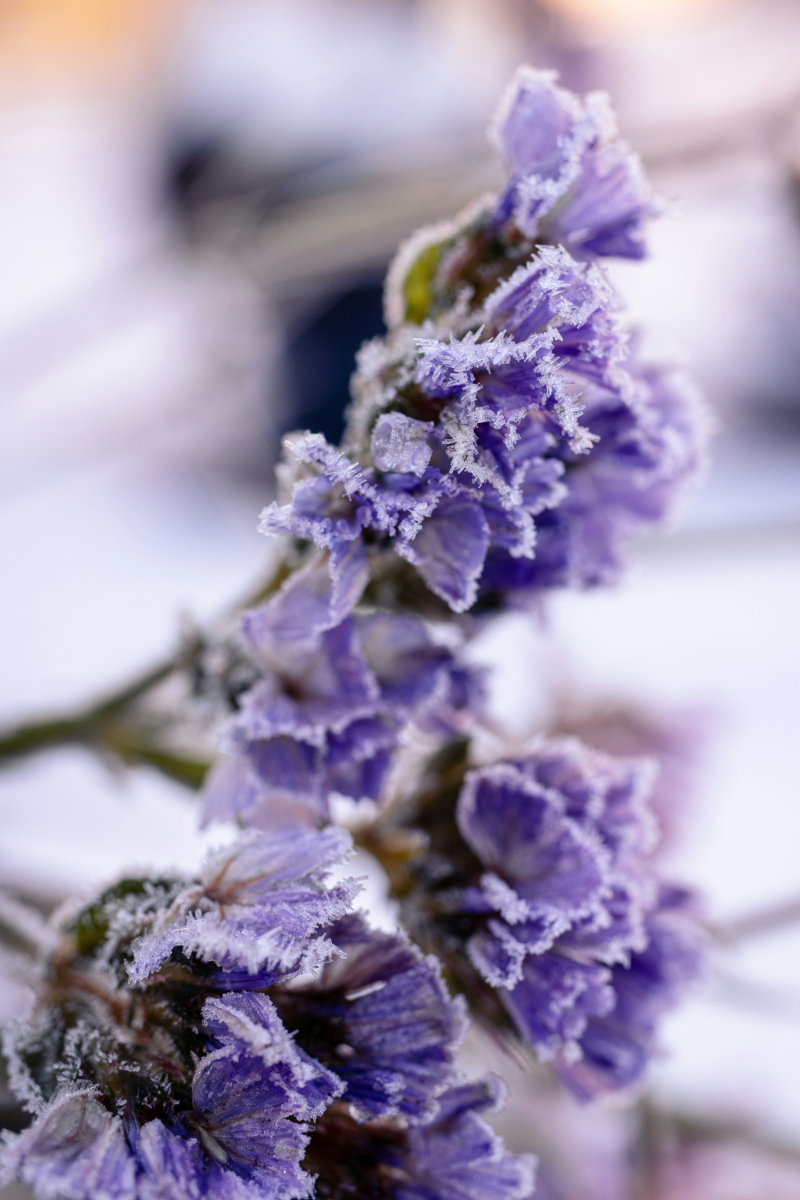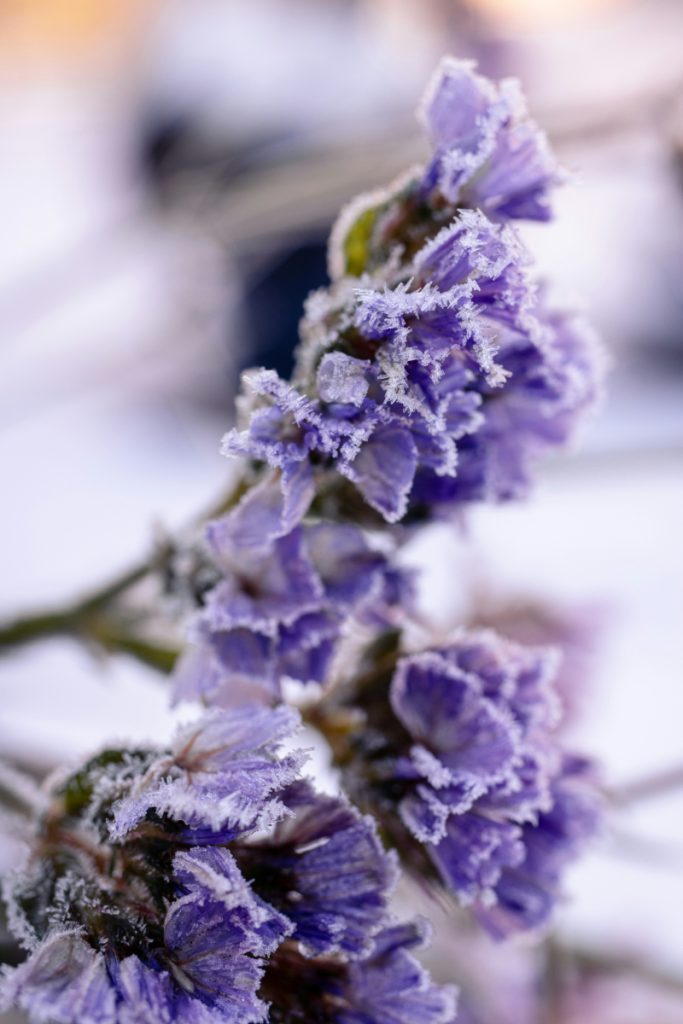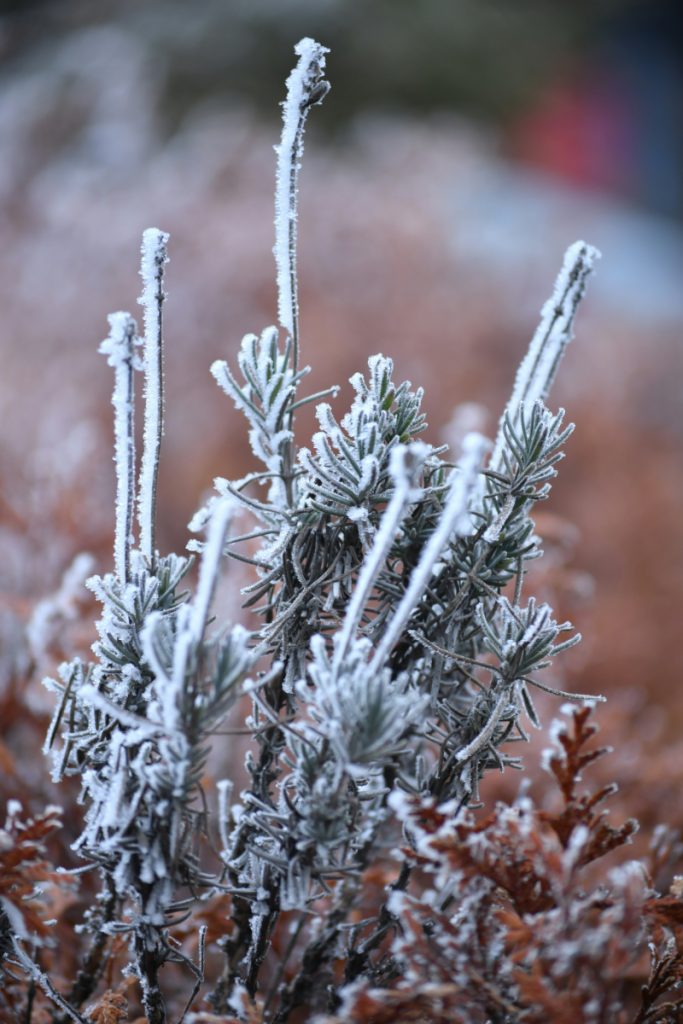
If you’re a fan of lavender, you know how important it is to take care of your plants in the winter months. Lavender is a hardy plant that can survive in many different climates, but it still needs some TLC to make it through the colder months. Whether you’re growing lavender indoors or outdoors, there are a few things you can do to ensure your plant stays healthy and vibrant all winter long.
One of the most important things you can do to care for your lavender in winter is to make sure it’s getting enough sunlight. Lavender needs plenty of light to thrive, so if you’re growing your plant indoors, make sure it’s near a window that gets plenty of sun. If you’re growing lavender outside, try to choose a spot that gets at least six hours of sunlight each day. Additionally, you’ll want to make sure your lavender is getting enough water. While lavender is drought-tolerant, it still needs to be watered regularly to stay healthy.

Understanding Lavender’s Winter Needs
Lavender is a hardy plant that can survive cold temperatures, but it still needs special care during the winter months to ensure its health and longevity. Here are some key things to keep in mind when caring for your lavender during the winter:
- Watering: Lavender needs less water during the winter months, so be careful not to overwater it. Too much moisture can cause root rot and other issues. Water your lavender only when the soil is dry to the touch, and be sure to use well-draining soil.
- Temperature: Lavender is adapted to tolerate mild winter temperatures, but extreme cold can be detrimental to its health. Freezing temperatures can lead to frost damage or even kill the plant if not adequately protected. If you live in a region with very cold winters, it may be best to bring your lavender inside or cover it with a protective layer of mulch.
- Sunlight: Lavender needs plenty of sunlight to thrive, even during the winter months. If you’re keeping your lavender indoors, be sure to place it in a sunny window or under grow lights. If your lavender is outside, make sure it’s in a spot that gets plenty of sunlight throughout the day.
- Pruning: Pruning your lavender in the late fall or early winter can help promote healthy growth and prevent disease. Cut back any dead or damaged branches, and trim the plant down to about half its size. This will also help prevent the plant from getting too leggy or woody.
By following these simple tips, you can help ensure that your lavender stays healthy and beautiful throughout the winter months. With a little care and attention, you’ll be rewarded with fragrant blooms and a thriving plant come springtime.
Preparing Lavender for Winter
Lavender is a hardy plant, but it still needs some preparation to survive the winter. Here are some tips to help you get your lavender ready for the colder months.
Pruning
Before winter sets in, it’s a good idea to prune your lavender. This will help it grow back stronger in the spring. Cut back any dead or damaged branches, and trim the remaining branches back by about one-third. Be sure to use sharp, clean pruning shears to avoid damaging the plant.
Mulching
Mulching is an important step in preparing your lavender for winter. A layer of mulch will help protect the roots from freezing and thawing, which can damage the plant. Spread a layer of organic mulch, such as shredded leaves or straw, around the base of the plant. Be sure to keep the mulch away from the stems, as this can cause them to rot.
Watering Requirements
Lavender prefers dry soil, so it’s important not to overwater it during the winter months. Water the plant deeply once every two to three weeks, or when the soil is completely dry. Be sure to water the plant during the day, as watering at night can lead to fungal growth.
By following these simple steps, you can help ensure that your lavender survives the winter and comes back strong in the spring.
Protecting Lavender During Winter
Lavender is a hardy plant, but it still needs some protection during the winter months. Here are some techniques to help protect your lavender plants during the winter.

Insulation Techniques
One of the best ways to protect your lavender plants during the winter is to use insulation techniques. Adding a layer of mulch around the base of the plant can help protect the roots from the cold. You can use materials such as straw, leaves, or pine needles as mulch. Be sure to add a layer that is at least 2-3 inches thick.
Another insulation technique is to use burlap or frost cloth to cover the plant. This will help protect the plant from wind and cold temperatures. Be sure to remove the cover during the day to allow the plant to get sunlight and air.
Indoor Relocation
If you live in an area with extremely cold winters, you may want to consider bringing your lavender plants indoors. Lavender can be grown indoors in a sunny window or under grow lights. Be sure to keep the plant away from drafts and to water it sparingly during the winter months.
When bringing your lavender plants indoors, be sure to check for pests before bringing them inside. You don’t want to introduce pests into your home.
By using insulation techniques and indoor relocation, you can help protect your lavender plants during the winter months and ensure they come back strong in the spring.
Monitoring and Maintenance
To ensure that your lavender plants thrive during the winter, you need to monitor and maintain them regularly. This section covers some of the essential tasks you need to undertake to keep your lavender plants healthy during the winter.
Pest Control
Pests can be a significant problem for lavender plants during the winter. To prevent infestations, you need to inspect your plants regularly for signs of pests such as aphids, spider mites, and whiteflies. If you notice any signs of infestation, you should take immediate action to control the pests.
One effective way to control pests is by using insecticidal soap. You can apply the soap directly to the pests or spray it on the plants. Be sure to follow the manufacturer’s instructions carefully to avoid damaging your plants.
Damage Assessment
Winter weather can be harsh on lavender plants, and they may suffer damage from freezing temperatures, snow, and ice. To prevent damage, you should inspect your plants regularly for signs of stress or damage.
One way to assess damage is by checking the foliage for discoloration or wilting. If you notice any signs of stress, you should take immediate action to protect your plants. For example, you can cover your plants with burlap or other protective materials to shield them from the elements.
Another way to assess damage is by checking the roots for signs of rot. If you notice any signs of rot, you should remove the affected roots and replant your lavender in fresh soil. Be sure to water your plants sparingly to prevent further damage.
In conclusion, monitoring and maintaining your lavender plants during the winter is essential to their health and survival. By following the tips outlined in this section, you can protect your plants from pests and damage and ensure that they thrive throughout the winter.





